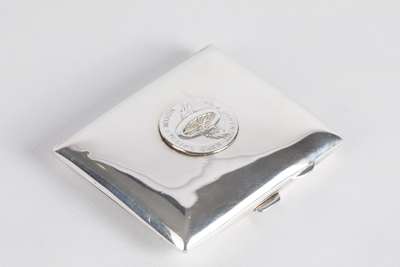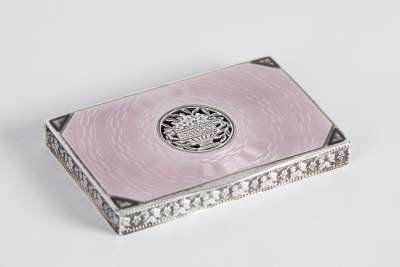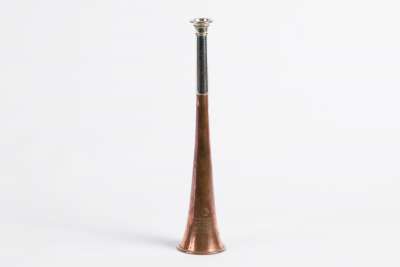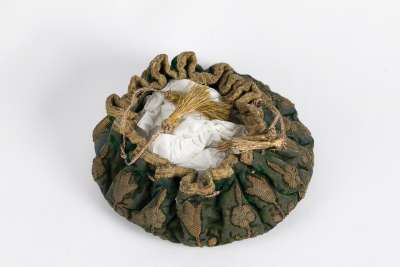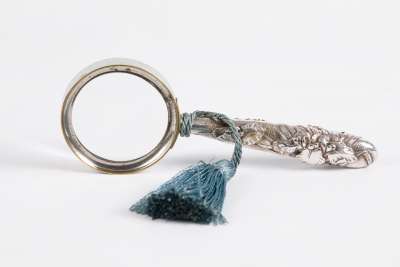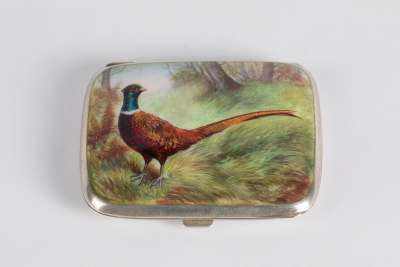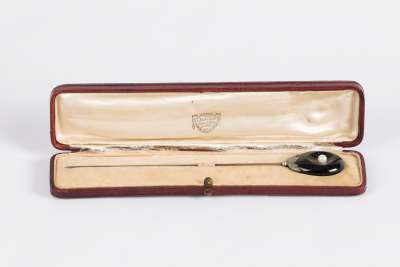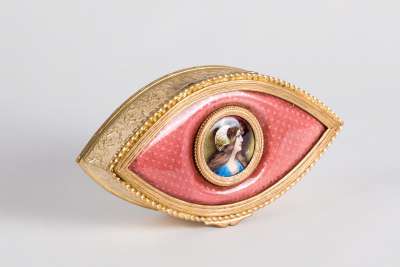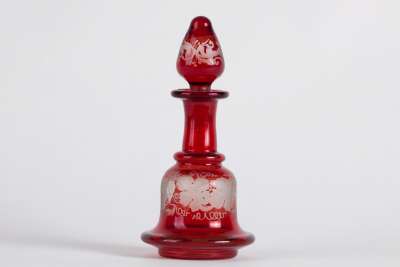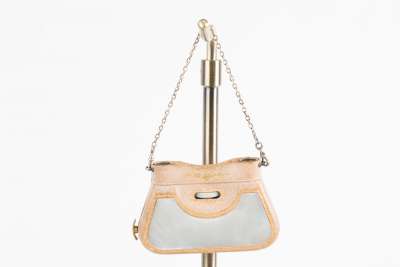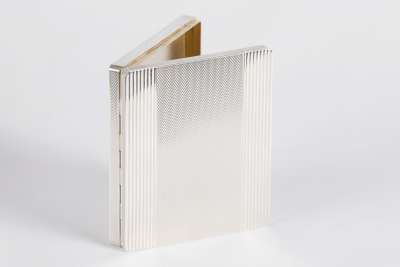This sulphide glass paperweight features a finely detailed white bust in profile of a man believed to be George IV during his time as Prince Regent (1811–1820). Encased within clear glass, the portrait captures the elegance of early 19th-century craftsmanship. The figure is depicted wearing the distinguished collar and robes of the Order of the Garter, the most prestigious British order of chivalry. Surrounding the bust is a distinctive rectangular frame adorned with leaf or fan-like embellishments at each corner, reflecting the neoclassical design elements popular during the Regency period. Likely crafted by Apsley Pellatt & Co., a pioneering British glassmaker, this piece exemplifies the innovation and quality of early sulphide glass creations. Circa:1820
Condition Report
Overall, the paperweight appears to have been well-preserved, maintaining its structural integrity and presenting in good condition. There are no visible chips or cracks on the glass, which remains clean and smooth. Minor signs of wear, consistent with age, include light surface scratches or smudges typical for an antique glass object. The sulphide bust of George IV is sharply defined, with details of the collar and robes showing no major wear. The decorative edges and corner details retain their original shape without significant damage. On the reverse, minor specks or inclusions in the glass are noted, likely inherent from the production process.
Dimensions
Weight: 355 grams. Length: 10.5 cm. Width: 10 cm. Height: 2 cm.
Original Use: A Functional and Decorative Object
This paperweight was originally intended as both a functional and decorative object. During the 19th century, paperweights served to keep documents in place on desks, while also acting as a display of artistic taste and social status. The intricate design and craftsmanship of this piece would have made it a desirable item for any well-appointed office or study.
Neoclassical Style: A Reflection of Regency Elegance
The neoclassical style of this paperweight is characteristic of works from the Regency period, renowned for its revival of classical art and architecture. The use of symmetrical designs and classical motifs, such as the leaf embellishments, highlights the influence of ancient Greek and Roman aesthetics. This style was particularly favoured by the British elite during the early 19th century, and this piece is an exemplary representation of that artistic tradition.
Sulphide Glass Technique: A Pioneering Craft
The creation of this paperweight involved the sulphide glass technique, a method pioneered by Apsley Pellatt & Co. around 1819. This process, known as "cameo incrustation," involves encasing a sulphide medallion within glass, requiring precision to ensure clarity and detail. The cameo is typically made from a white clay or ceramic material, which contrasts sharply with the transparent glass, enhancing the visual impact. Pellatt's innovation in this craft allowed for intricate designs and contributed to the popularity of such objects during the period.
Apsley Pellatt & Co.: Pioneers of Sulphide Glass
This paperweight is likely a creation of Apsley Pellatt & Co., a renowned British glassmaker known for pioneering sulphide glass creations following his patent of the "cameo incrustation" method in 1819. Pellatt's work is celebrated for its innovation and quality, making his pieces highly sought after by collectors. His contributions to the glassmaking industry set a standard for excellence and creativity, influencing subsequent glassmakers and leaving a lasting legacy in the field of decorative arts.
Collecting Sulphide Glass Antiques: A Historical Perspective
Sulphide glass antiques have been collected for their unique beauty and historical significance. These items are valued for their intricate designs and the skill required to produce them. Collectors appreciate the combination of artistic expression and technical achievement represented in each piece. The distinctiveness of sulphide glass, along with its historical context, makes it a desirable addition to collections focused on 19th-century decorative arts.


